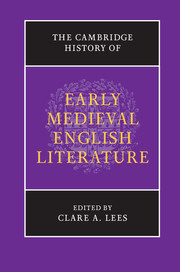Book contents
- Frontmatter
- Contents
- List of Illustrations
- List of Contributors
- Acknowledgements
- List of Abbreviations
- Introduction: literature in Britain and Ireland to 1150
- I WORD, SCRIPT AND IMAGE
- 1 Writing in Britain and Ireland, c. 400 to c. 800
- 2 The art of writing: scripts and scribal production
- 3 Art and writing: voice, image, object
- 4 Of Bede’s ‘five languages and four nations’: the earliest writing from Ireland, Scotland and Wales
- 5 Insular Latin literature to 900
- 6 Bede and the northern kingdoms
- II EARLY ENGLISH LITERATURE
- III LATIN LEARNING AND THE LITERARY VERNACULARS
- Bibliography
- Index of manuscripts
- Index
4 - Of Bede’s ‘five languages and four nations’: the earliest writing from Ireland, Scotland and Wales
from I - WORD, SCRIPT AND IMAGE
Published online by Cambridge University Press: 05 February 2013
- Frontmatter
- Contents
- List of Illustrations
- List of Contributors
- Acknowledgements
- List of Abbreviations
- Introduction: literature in Britain and Ireland to 1150
- I WORD, SCRIPT AND IMAGE
- 1 Writing in Britain and Ireland, c. 400 to c. 800
- 2 The art of writing: scripts and scribal production
- 3 Art and writing: voice, image, object
- 4 Of Bede’s ‘five languages and four nations’: the earliest writing from Ireland, Scotland and Wales
- 5 Insular Latin literature to 900
- 6 Bede and the northern kingdoms
- II EARLY ENGLISH LITERATURE
- III LATIN LEARNING AND THE LITERARY VERNACULARS
- Bibliography
- Index of manuscripts
- Index
Summary
As is clear from his Historia ecclesiastica gentis Anglorum [An Ecclesiastical History of the English People], which he completed in 731, Bede considered the activities of neighbouring peoples to have been an important part of the particular version of English history he wished to relate. Contact between them must have been continuous, and constant interaction occasioned much opportunity for mutual influence and exchange of ideas across a wide area. Notwithstanding this, the written traditions of the British, Irish and Picts – the three groups which alongside the English constituted for Bede his ‘four nations’ (HE, I.1) – are varied in both the extent and nature of the material that has survived. The cultures shared common concerns yet were moulded by local developments. Overlapping strands in their narratives, however important, form but a part of individual literary histories, each located in a particular time and place.
For Bede their Christian strand was most significant and in this regard the Irish in particular are praised. He applauded their conversion tactics, specifically the mission of Aidan, later bishop of Lindisfarne, and Columba, founder and first abbot of Iona, to the Picts and to his own territory of Northumbria. The Irish succeeded admirably where native Britons had failed. Newly converted Anglo-Saxons travelled in large numbers to Irish monasteries to avail themselves of scholarship presumably lacking at home (HE, iii.7, 25, 27). Among them was Aldfrith, king of Northumbria (d. 704), whose sojourn among the Irish before he succeeded to the kingship had ensured that he became in scripturis doctissimus [HE, iv.26; most learned in the Scriptures] and during which he may even have acquired an Irish name (Flann Fína). Dealings with Irish leaders may also date from this period and it was on political business that Aldfrith was first visited by Adomnán, abbot of Iona, who sought out the Northumbrian king to plead for the release of Irish hostages who had been captured in a Saxon raid on Brega in the Irish midlands in 685. Writing half a century or so later, Bede deemed these Irish contacts to have been of key importance; Irish influence in English ecclesiastical history is for him a major theme.
- Type
- Chapter
- Information
- The Cambridge History of Early Medieval English Literature , pp. 99 - 119Publisher: Cambridge University PressPrint publication year: 2012
- 3
- Cited by

